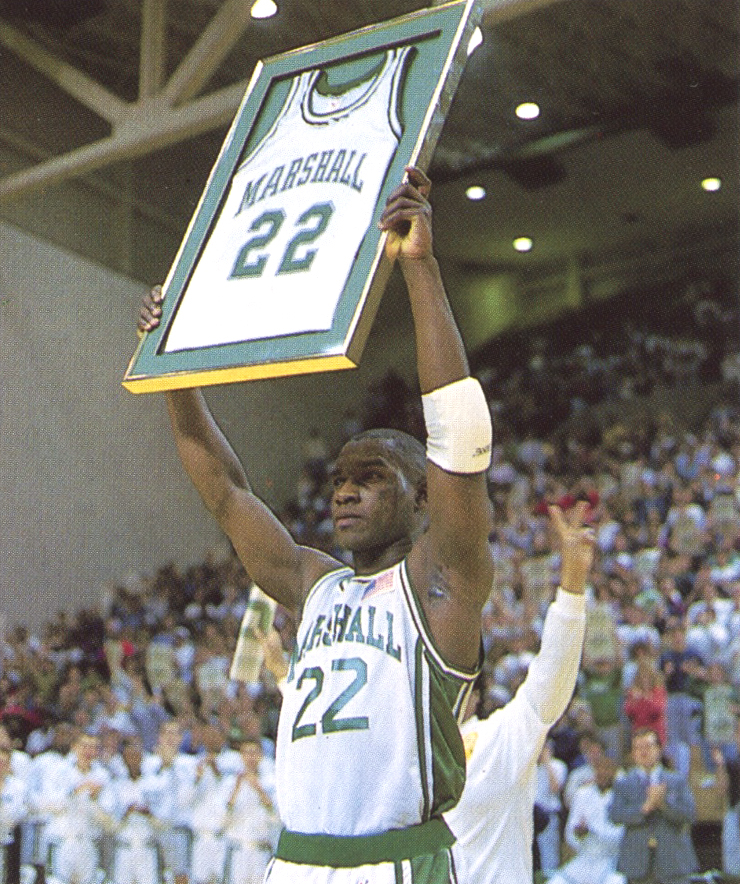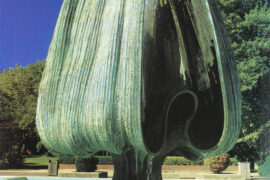The story of John Taft
By Dwight Freeman
HQ 7 | SPRING 1991
I first met John Taft in the Spring of 1989 as an assistant coach under Dana Altman at Marshall University. Coach Altman and I had been friends for a long time and he gave me the opportunity to come to Huntington and work with him to try to build a program.
When I came to the university, we received a list of players that were returning and we watched a lot of films. On the film, I noticed a young man who could do a lot of things: he could shoot the ball and had great quickness and a knack for scoring. It was at that point that I realized we had a tremendous player on our hands. I knew that the man who would carry this team over the next two years was a 6′ 1″ junior guard by the name of John Taft.
Whenever a new coaching staff is brought in, there is always an adjustment period for the players. For whatever reasons the players who stay on always seem to have a sense of loyalty for the departing coaches, and you wonder how your relationship will be with the team. One of the first things we did when Coach Altman arrived was call a team meeting. Usually, this meeting will give the coaching staff a feel for the pulse of the team and in what direction they are headed, both on the court and in the classroom.
Sitting in that meeting very attentively was John Taft. I was very surprised because, usually, when you have such a starstudded athlete, you go through that adjustment period when they try to test the coaches and see what they can get away with. John and I had a brief conversation and I found him to be a very pleasant young man with quite a bit on the ball. I expected him to be a little taller by his scoring prowess and rebounding ability. Looking at him, I thought to myself, “Boy, he doesn’t look as tough as he did on the films.”
But, once we got started with the conditioning, running and the weight lifting, I saw just how tough he really was. It’s an attitude. The young man has a tremendous work habit. He really comes out and works hard and gets the most out of every opportunity. I was really surprised by what he could do in the weight room with his natural strength. He could bench press over 375 pounds.
The relationship between the player and the assistant coach is usually different from that of the head coach. As an assistant, I was closer to John. We became friends. So during his junior year, I really got to know him a little more personally. Being with John in the weight room or on the track, I really got a true sense of how hard he worked.
Sometimes, players challenge coaches to a little one-on-one game just for the fun of it. In John’s junior year, I was issued just such a challenge and proceeded to line up the four guys who wanted to take me on. I thought it would be a good opportunity to check the character and toughness of each player. I beat my first player 12-0. I proceeded to beat the next guy 12-0 and the next guy 12-0. Then I came to John Taft.
My game plan with the other players had been to out-muscle them and to physically put them down into the paint. But, the game plan didn’t work so well with John. We don’t know exactly who won that final one-on-one confrontation because the game was cut short for practice. Actually, I was really glad practice had to start because I think he might have won and I was trying to keep my undefeated record going. But, right then, as practice got under way, I knew the potential John had with his strength and quickness on the floor.
As a coach, you try to push a player to the limit to get the most out of him. Sooner or later, however, you push too hard and there is a confrontation. As the year went on, we kept pushing John to the limit and I was always looking for that confrontation to arise. But, the more we pushed, the harder he worked. I was amazed at his work ethic and his ability to move past his limits. John was very coachable. He always did what was asked of him. He was always the first one at practice and the last one to leave.
Making the transition from assistant to head coach in John’s senior year was one I thought would be difficult, especially where discipline was concerned. Now, instead of being the one who tried to mediate between the player and the head coach, I was the one making the decisions.

In college, I was the type of player who led by example. John was the same type of player. As team captain he wasn’t as vocal, but he was always an example.
One of the things I really have been impressed with over the past two years is John’s growth into a mature person both on and off the court. An exam pie are the rumors that John used to get into fights. Talking to John, I told him that celebrity status is harder to live with than anything else. For example, if Mike Tyson walked into a local establishment, there is always a guy thinking, “Hey, he’s not that tough. I can take him.” Today, John walks away from these situations. He now realizes that he doesn’t have to prove anything. What he has to do is take care of his body.
Early in John’s senior season, we made a road trip to the Market Square Arena in Indianapolis, Indiana. It was an important time in the school’s history as we were taking on Bobby Knight’s nationally ranked Indiana Hoosiers in the first round of the Hoosier Classic.
At halftime, we were trailing Indiana 43-22. As the second half got underway, John had the ball on the wing when Indiana’s Chris Reynolds, who had heard of John’s reputation, jumped in front of him and said, “Come on big boy, show me what you’ve got.” With that, John proceeded to go on a tear, hitting seven consecutive shots and scoring 18 pts. in the next six minutes. When John had the ball on the wing again, he looked up at Reynolds and said, “Have you seen enough?”
John scored 28 points in that game in a losing effort and added another 30 the next night against North Texas in the consolation game. He set a new tournament scoring record with 58 points eclipsing the mark set by Indiana’s Steve Alford in 1981. And, perhaps most importantly, he caught someone’s attention. “I was very impressed watching Taft on tape,” Coach Bobby Knight remarked. “And I was more impressed watching him play in the second half. I really like the kid. He’s extremely competitive, very tough-minded.”
I think the way you determine the true value of any player is to take him off the team and imagine that he is playing in someone else’s program. There are a lot of players doing well in the league, but I don’t think there is a player doing for his team what John has done for us. The numbers speak for themselves … John Taft is Marshall University’s second all-time leading scorer with 2,332 points. He is a two-time recipient of the Southern Conference Player of the Year award. With a scoring average of 27.3 in his senior year, he is ranked 8th in the nation. He leaves Marshall with school records in career 3-point field goals (185) and 3-point field goal attempts (463), free throws (525) and the list goes on.
On Feb. 23, 1991, the Marshall University Athletic Department retired the numbers worn by John Taft during his career. Taft’s No. 22 will never be worn again by a Thundering Herd player. His jersey was framed and will hang on the wall at the Cam Henderson Center alongside of Walt Walowac’s No. 20, Leo Bird’s No. 44 and Hal Greer’s No. 16. It is an honor befitting a great player and for John Taft it marks the end of an illustrious collegiate career.
John plans to graduate from Marshall University this summer. But his schoolwork may be put on hold as he prepares to fulfill his dream of playing professional basketball. He is currently being looked at by several NBA teams.
“All of the attention puts a lot more pressure on me, ” John said recently. “People will be looking at me in a different light and I won’t let them down. I will not steer wrong. I know what I want and I will be successful.”
Wherever the future takes John, I know in my heart he will always be a winner. Because no matter what he accomplishes, he will always have the fond memory of that one-on-one game in his junior year when he almost beat his old coach.
For Number 22 …
The road is narrow
The road is straight
You’ve worked so hard
To come this far
Don’t falter
Don’t stray
Trust in God
He will lead the way
Good-bye John.
• • •
ON JOHN TAFT
”John Taft is one of the better guards in the country. He is a very tough and aggressive kid. “
Marty Blake, director of scouting for the NBA
”John Taft is one of the outstanding basketball talents in the country. What impresses me most about John is that he has worked hard to improve each year.”
Les Robinson, N.C. State
“You probably would expect me to single out one of the big name stars, but I’ll have to say Taft is the toughest. He’s very strong and really knows how to take the ball to the basket.”
Bimbo Coles, of the NBA’s Miami Heat, when asked to name the best all-around man he had encountered in college basketball.
“I don’t know of anyone in the country who can stop John Taft in a one-on-one situation.”
M.K. Turk, Southern Mississippi
“I was very impressed watching Taft on tape and I was more impressed watching him in person. I really like the kid. He’s extremely competitive, very tough-minded.”
Bobby Knight, Indiana





